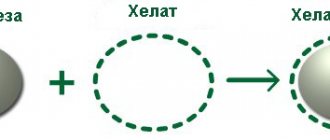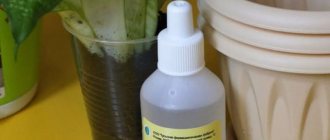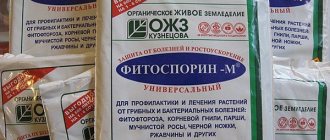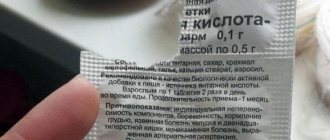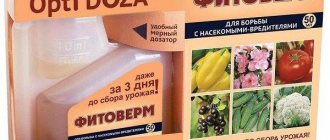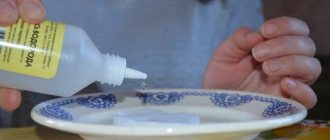Hydrogen peroxide (H2O2) is known as a remedy used for medical purposes and is also widely used in everyday life. There are many scientifically proven methods for using it. In this article we will talk about hydrogen peroxide for plants , what use gardeners and gardeners have found for it.
The main advantage of hydrogen peroxide is that it is a strong oxidizing agent that has a detrimental effect on pathogens. Thanks to these qualities, peroxide is used in various fields. It is often used by gardeners, gardeners, and indoor plant lovers.
The effect of watering seedlings
Systematic watering and spraying of plants with a solution of hydrogen peroxide promotes the rapid growth of seedlings and the formation of healthy seedlings.
- Improvement and strengthening of the root system.
- Increasing plant immunity.
- Additional nutrient medium.
- The extra atom in the external environment is separated from the molecule. The oxygen environment creates living conditions that are impossible for microorganisms (viruses and bacteria).
- Neutralization of nitrites and nitrates.
- Hydrogen peroxide is an oxidizing agent for soil. A favorable environment promotes rapid seed germination.
Hydrogen peroxide for the garden: principle of operation
H2O2 is hydrogen peroxide, or, as it is more often called, hydrogen peroxide. Judging by the formula, as well as by its appearance, we can say that peroxide is almost water. “Almost” consists of one oxygen atom, and this compound is very unstable: the “extra” atom is easily separated from the molecule, and its oxidative functions are manifested. So, if you spill peroxide on a wound, free oxygen will destroy the tissues of pests - microbes, spores, and the wound will be considered disinfected. The same thing happens with pathogens on plants and in the soil.
But that is not all. Watering with hydrogen peroxide saturates the soil with “extra” oxygen, that is, it serves as an aerator.
You can also use peroxide to improve the quality of water for irrigation - it oxidizes organic matter, pesticides, and promotes rapid weathering of tap chlorine.
When to use peroxide
Hydrogen peroxide is considered one of the safest and at the same time very useful means for plants at all stages of their development.
- For seeds - soaking before sowing or germination, as a growth stimulator and disinfectant.
- For seedlings – a stimulator for the formation and strengthening of the root system.
- For seedlings - the formation of immunity before or after transplanting into the ground.
- For mature plants – immunity support, pest control, soil aeration.
Watering the beds with a solution
Various pharmaceutical products are used to water the beds, including hydrogen peroxide. The components included in its composition saturate the soil with oxygen, make the soil more acidic, get rid of pathogens, and the roots are able to absorb nutrients more efficiently.
A solution is prepared from 20 ml of the substance and 1 liter of water. This dosage is considered safe and universal. Before each treatment, a new solution is made, because the beneficial properties of peroxide quickly evaporate in air.
When not to use peroxide
Hydrogen peroxide is indicated for all vegetable crops and most indoor flowers. However, there are a number of contraindications when the use of hydrogen peroxide is not recommended:
- Hydrogen peroxide for treating and feeding plants is used a maximum of 2 times a week when using purchased soil and once a week when growing in garden soil. An excess of peroxide leads to a change in the qualitative composition of the soil.
- Peroxide is not used for spraying crops with double leaves. Contact of the product on the leaf plate stimulates putrefactive processes.
- Succulents and cacti are not treated with peroxide, as they react sharply to changes in the balance of micro and macroelements in the soil.
Precautionary measures
- Before watering and spraying, remove all fallen leaves from the ground.
- Do not exceed the recommended dosage, especially when spraying, since a high concentration of peroxide causes leaf burn.
- A solution of hydrogen peroxide is considered an independent fertilizer; it is not mixed with other types of fertilizers.
- Use only freshly prepared solution.
- A sign of overdose is whitening of the stems or leaves of the plant. In this case, take a break from using the selected product.
Seed treatment
Hydrogen peroxide, along with manganese, is used to treat seeds and increase their germination percentage. Before planting, the seed is kept in a concentrated peroxide solution:
- 500 ml water;
- 25 ml peroxide.
The seeds are placed in gauze well moistened with a solution or on a napkin and kept for 8-12 hours.
It is possible to use a pure 3% solution from a pharmacy. To do this, the peroxide is heated to 40°C, the seeds are placed in it and kept for 7-10 minutes. If a 3% peroxide solution at room temperature is used for processing, the time is increased to 30 minutes.
If seed treatment is carried out only for the purpose of disinfection, then you can spray them with a spray bottle and dry them.
When soaking seeds, adjustments are always made for the crop. For example, tomatoes, eggplants, beets and peppers are kept in the solution for 24 hours. Parsley, dill and carrot seeds are soaked for at least 15 hours , as they contain a large amount of essential oils that make it difficult for sprouts to appear.
Important: seeds can only be soaked in plastic or ceramic containers.
Against diseases
In order to prevent diseases and as protection against pests, hydrogen peroxide is used for spraying garden and vegetable crops. The solution is prepared according to the recipe:
- 1 liter of water at room temperature;
- 50 ml peroxide;
- 2 tbsp. medical alcohol 70%;
- 2-3 drops of liquid soap.
Carefully move everything and use it undiluted for spraying plants to protect them from aphids, scale insects, and mealybugs. It is also a remedy for blackleg and rot.
The solution is prepared immediately before use.
How does the substance affect the plant?
Hydrogen peroxide has a beneficial effect on plants. A substance with an aqueous solution allows gardeners to accelerate the growth of plants or protect them from death. With the complex use of the solution, one should expect active flower growth and rapid development of buds. With constant use of peroxide, strengthening of the roots and development of a healthy plant trunk are observed. The leaves begin to grow more densely, the buds develop quickly. In case of illness and wilting of the flower, a positive effect is observed. The flower recovers and enters the growth and flowering stage. A solution of water and peroxide cannot harm flowers if it is used strictly for its intended purpose, that is, do not exceed dosages.
Important! The substance must be used in the correct proportions and comprehensively. You cannot limit yourself to just watering or spraying, especially for sick flowers.
Application by crop
Tomatoes
Tomatoes respond well to hydrogen treatments, since during the growth process this crop consumes maximum nutrients from the soil and needs constant feeding.
- To enhance the effect, it is recommended to alternate root and foliar feeding.
- Throughout the entire seedling period, peroxide treatment is carried out every 14 days, starting from the formation of the first pair of true leaves, but not earlier than 15-20 days after germination.
- For spraying, take a solution prepared according to a standard recipe. If the plants develop without failures, for prevention they are sprayed or watered at the roots with the same composition every week.
- If problems arise, the seedlings weaken or turn yellow, spraying is replaced by watering.
- A week after planting tomato seedlings in the ground, the plants are watered with a solution at the rate of 20 tbsp. peroxide in a bucket of water.
- This helps the bushes to quickly adapt to a new place and grow green mass, and also protects them from falling flowers.
- To protect tomatoes from late blight, plants are sprayed with a solution of peroxide with iodine. To do this, dilute 35 ml of peroxide and 4 drops of iodine in 1 liter of water at room temperature.
- Spraying with a solution in the proportion of 25 ml of peroxide per 1 liter of warm water helps protect nightshades from fungus.
cucumbers
Cucumbers are considered one of the weakest crops. They are often attacked by fungal diseases, so in addition to spraying to maintain the vegetative mass, they are watered with a solution at the rate of 10 ml of product per 10 liters of water. This is a prevention of powdery mildew, as well as a means of combating aphids.
Due to their large leaf blades, cucumbers are sprayed only in the evening or in cloudy weather. Attention is paid not only to the outside, but also to the back side of the sheet.
Important: when watering cucumbers with peroxide solution, make a groove near the bushes, retreating a few centimeters from the base of the stem. This will prevent burns to the roots.
Peppers and eggplants
Pepper seedlings need a less concentrated peroxide solution: 20 drops of peroxide per liter of water. As with tomatoes, peppers are treated with the solution no more than once a week.
Important: a saturated watering solution can burn the roots.
The watering regime is changed only after picking or after planting the plants in the ground. For them, you need to dilute 2 ml of peroxide in 1 liter of water. This concentration is needed for weekly watering. If fertilizing is carried out less frequently, then the proportions are changed: 2 tbsp. funds per liter of water.
All this applies to both pepper seedlings and eggplant seedlings.
Strawberries
For strawberry seedlings, a working solution is prepared, which is sprayed on young bushes from early spring and throughout the growing season. This protects the plants from rot and strawberry weevil.
To prevent fungal diseases, before planting strawberry seedlings in the ground, water the beds with a solution prepared from 1 liter of water and 5 tablespoons of a pharmaceutical product.
Important: hydrogen peroxide is absolutely safe for plants and humans, so you can spray strawberries even during the fruiting period.
Petunia
Spraying petunia seedlings with a solution of hydrogen peroxide helps the plant form abundant greenery and prolong flowering. To do this, dilute 2 tablespoons per 1 liter of water. peroxide.
Important: watering the roots with peroxide solution is not permissible for petunia.
Fertilizer for garden and indoor plants
Feeding plants with hydrogen peroxide has a positive effect, especially on old soil. When an indoor tree, palm tree or cactus cannot be transplanted into a new pot, and replacing the top part of the soil does not improve the situation with aeration of the lower layers, a spoonful of peroxide per liter of water in combination with a complex fertilizer will revive the plant.
Young flowers can also be watered with peroxide water. To feed the greens, add a 3% solution of the drug (1 tbsp) to the water. If conventional mineral complexes for feeding plants cannot be used after replanting due to the high probability of chemical burns, the peroxide solution is safe.
Lifehacks
- Spraying or soaking the root system of seedlings in hydrogen peroxide before planting seedlings in the ground shortens the adaptation period and increases productivity. The proportions of the solution are 3 ml of product per 1 liter of lukewarm water. The seedlings are placed in liquid for a day, after which they are immediately planted in the ground.
- To water indoor flowers in order to reduce the concentration of harmful impurities in tap water, add 3 drops of peroxide for every 2 liters of liquid.
Hydrogen peroxide is a cheap pharmaceutical product that has no equal when caring for seedlings of fruit and vegetable crops and indoor flowers. It is important to follow the recommended proportions of peroxide dilution, and the plants will respond to it by increasing green mass and abundant fruiting.
How to feed geraniums with iodine and peroxide?
The combination of iodine and peroxide has proven itself well. The liquid helps cope with infections and pathogenic microorganisms.
How to feed geraniums with iodine and peroxide:
- It is necessary to dissolve 20 ml of peroxide in a liter of water and add 2 drops of an alcohol solution of iodine.
- In no case should the concentration of ions be exceeded, otherwise you risk burning the roots. The resulting product is poured under the root.
- Under no circumstances should you get it on the stem or leaves, as this may cause burns.
Treatment


